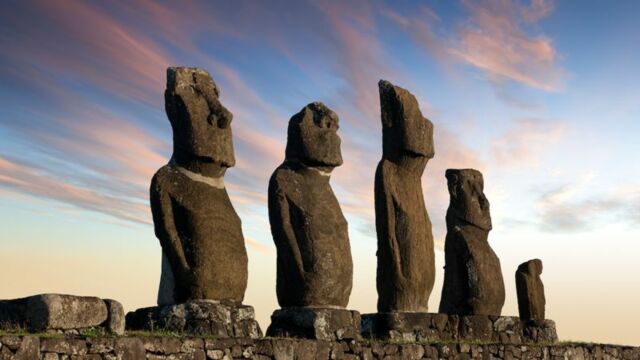What were the cryptic statues on Easter Island really used for?

The Moai statues, which have watched over the Island for hundreds of years, were originally carved by the Rapa Nui people and are some of the greatest achievements and gems that mankind has ever created. However, there is still the mystery of what they mean and why they were created, which, little by little, is starting to be cleared up by archaeologists.
The story behind theMoai statues on Easter Island and the Rapa Nui people (Chile) remains a mystery to this day. This line of almost 1,000 statues with their backs to the ocean and facing an empty landscape, is still fascinating researchers. Despite this mystery, they have however already figured out that these impressive idols were set on stone platforms called ‘ahu’ which were built by the people who lived on the Island, the Rapa Nui.
Discover our latest podcast
But the secret behind what these symbolic figures were actually used for was swept away with the collapse of the Polynesian society which designed them. Researchers have put forward several theories, the most popular and well-known being that they marked where freshwater could be found on the Island. But several other theories have also arisen about these giant effigies. However, a recent international study, published in the Journal of Archaeological Science in November this year, has come up with another idea.
More under this adMore under this adA quarry with rich soil
Studies have shown that more than 95% of the statues were extracted and sculpted from a quarry known as Rano Raraku, a volcanic crater on the Island. Although it covers less than 1% of Easter Island’s total surface area, it was used as a particular source for the materials needed to create these objects that weigh an average of 13.78 tonnes each. However, thanks to recent soil samples collected from this area, scientists have recently discovered that the composition of Rano Raraku isn’t actually just rock.
‘When we got the chemistry results back, I did a double-take,’ explained Sarah Sherwood, a geo-archaeologist from the University of the South in Sewanee (United States) on the University of California, Los Angeles’ official website.More under this adMore under this ad
‘There were really high levels of things that I never would have thought would be there, such as calcium and phosphorous. The soil chemistry showed high levels of elements that are key to plant growth and essential for high yields.’
Protecting their crops
Previously, researchers believed that the quarry was merely used as an industrial site and only to produce and temporarily store the Moai statues before they were moved to other locations on the Island. However, almost 400 monoliths weren’t moved from this area in which they were originally created. Some were even buried deep in the soil with the support of fortified rock structures. Therefore, it has been made clear that the positioning of these statues wasn’t necessarily provisional or temporary.
More under this adMore under this adWithin the samples they took, the research team alsofound traces of ancient crops such as banana, taro, sweet potato and paper mulberry tree. But what does all this mean? Well, as a matter of fact, it seems that while the islanders used this quarry to build their Moai statues, they also used it to grow food by taking advantage of the rich, ploughed soil in Rano Raraku.
In the past, scientists also assumed that the Moai statues were associated and connected to fertility ritualsand this new research has provided them with concrete proof.
More under this adMore under this ad‘That is, these and probably other upright Moai in Rano Raraku were retained in place to ensure the sacred nature of the quarry itself. The Moai were central to the idea of fertility, and in Rapanui belief, their presence here stimulated agricultural food production,’ concluded archaeologist Jo Anne Van Tilburg from UCLA.
So, it turns out these monumental statues were in fact built to watch over and protect their crops.